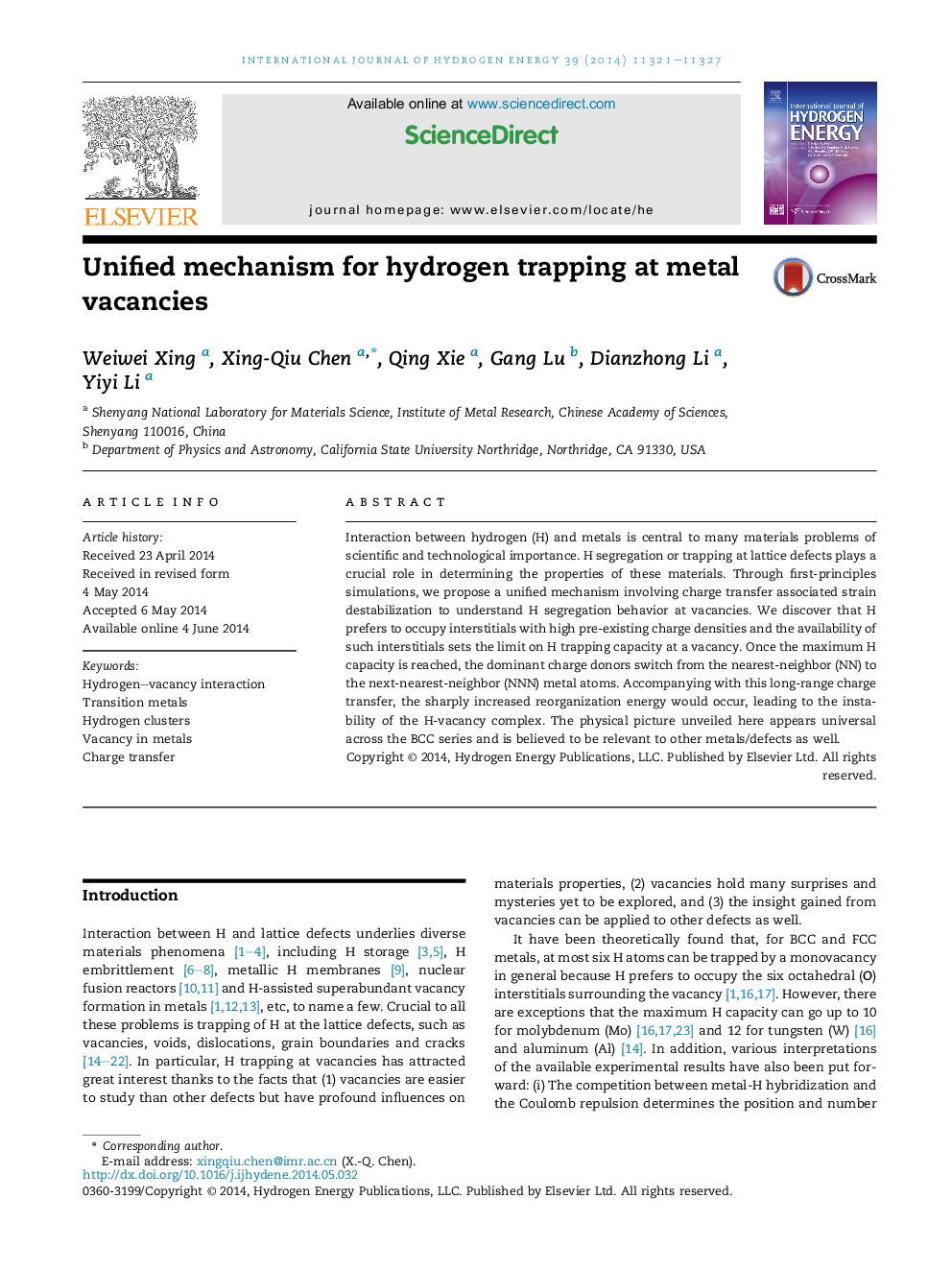| Article ID | Journal | Published Year | Pages | File Type |
|---|---|---|---|---|
| 1272274 | International Journal of Hydrogen Energy | 2014 | 7 Pages |
•We have proposed charge transfer associated strain destabilization mechanism.•H trapping at vacancies is coupled with high pre-existing charges interstitials.•When trapped, H is usually negatively charged from its surrounding metal atoms.•Instability of H cluster around vacancy is determined by deficit charges supplying.•The sharp strain energy increment corresponds to the shortage of supplied charges.
Interaction between hydrogen (H) and metals is central to many materials problems of scientific and technological importance. H segregation or trapping at lattice defects plays a crucial role in determining the properties of these materials. Through first-principles simulations, we propose a unified mechanism involving charge transfer associated strain destabilization to understand H segregation behavior at vacancies. We discover that H prefers to occupy interstitials with high pre-existing charge densities and the availability of such interstitials sets the limit on H trapping capacity at a vacancy. Once the maximum H capacity is reached, the dominant charge donors switch from the nearest-neighbor (NN) to the next-nearest-neighbor (NNN) metal atoms. Accompanying with this long-range charge transfer, the sharply increased reorganization energy would occur, leading to the instability of the H-vacancy complex. The physical picture unveiled here appears universal across the BCC series and is believed to be relevant to other metals/defects as well.
